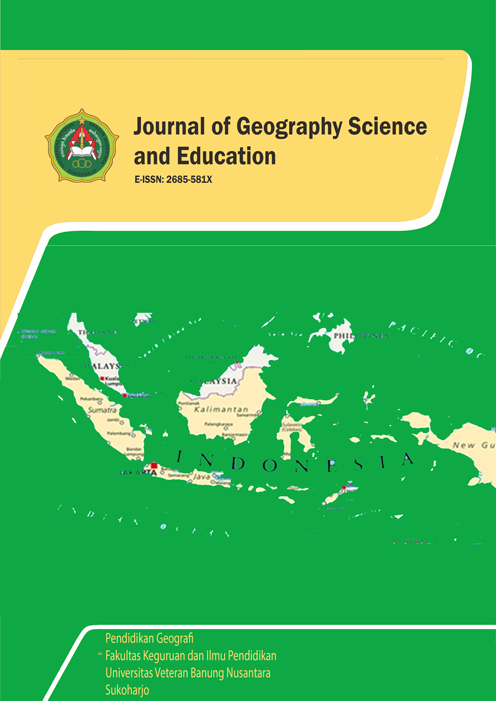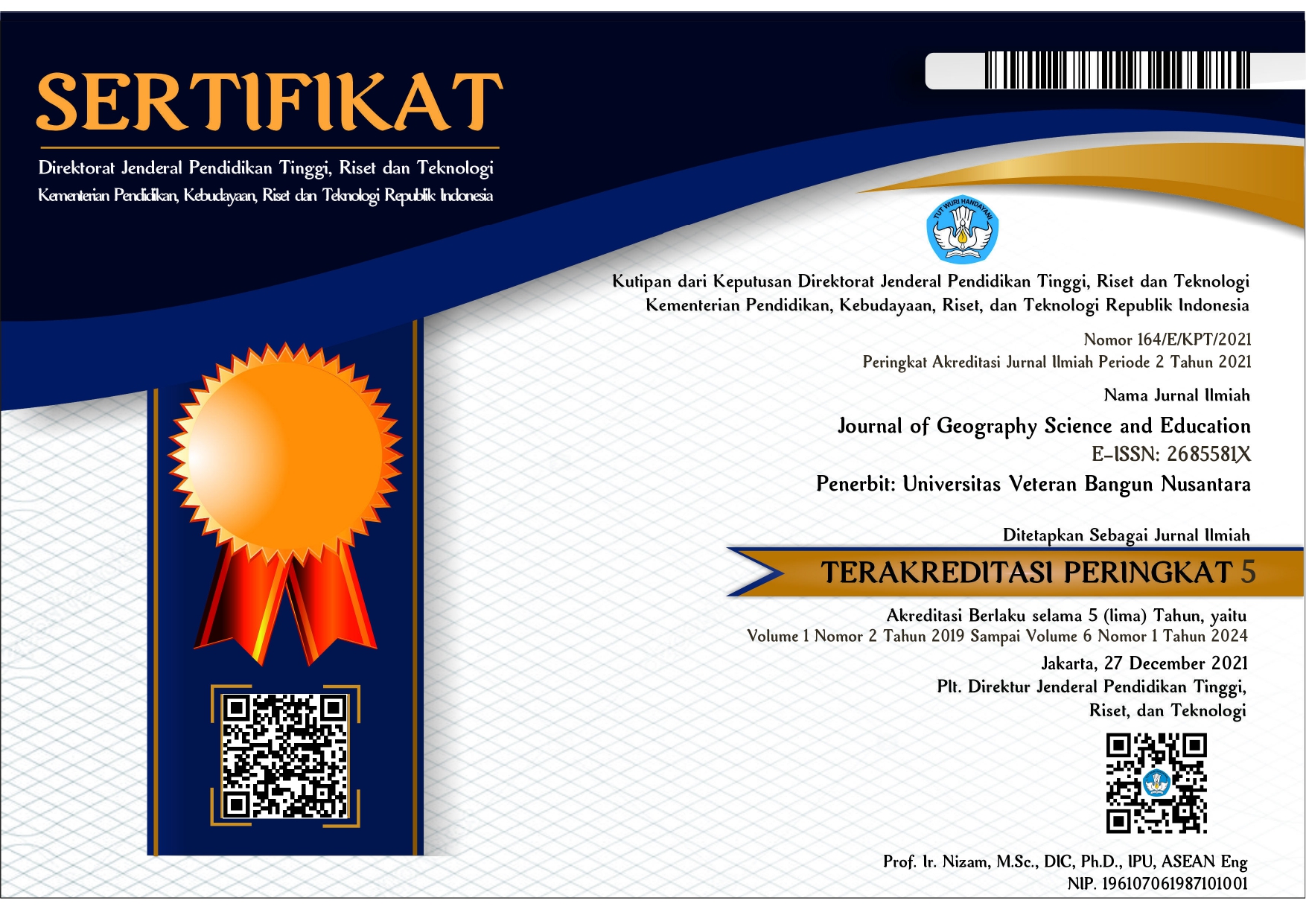The Effect of Using Canva-Based Media Usage on Geography Learning Outcomes of Class X Students at UNPATTI Laboratory High School
DOI:
https://doi.org/10.32585/jgse.v6i1.5766Abstract
This study aims to determine the effect of using Canva digital media on the geography learning outcomes of tenth-grade students on the lithosphere material at UNPATTI Laboratory High School. This research employs an experimental method with a control group and an experimental group design. The research sample consists of 28 students divided into two groups: the control group, which used conventional learning methods, and the experimental group, which used Canva. The results of the independent t-test shown in the table indicate a significant difference between the learning outcomes of the control group and the experimental group. The Levene's Test showed an F value of 0.804 with a significance value (Sig.) of 0.378, indicating that the assumption of equal variances is acceptable. In the t-test for mean comparison, the obtained t value was -2.651 with degrees of freedom (df) of 26 for the assumption of equal variances, and 25.547 for the assumption of unequal variances. The two-sided significance value, which was less than 0.05 (0.013 and 0.014 respectively), indicates a significant difference between the two groups. The mean difference between the two groups was -5.857, showing that the learning outcomes of the control group were significantly lower than those of the experimental group. The results of the independent t-test showed a significant difference between the learning outcomes of the two groups, with the experimental group showing higher learning outcomes. These findings suggest that using Canva as a learning tool can enhance learning outcomes for tenth-grade students on lithosphere material. This study supports the literature stating that interactive technology-based learning approaches can positively impact learning outcomes. Therefore, the use of Canva in learning can be considered an effective strategy to improve educational quality.
Downloads
Downloads
Published
How to Cite
Issue
Section
License
Copyright (c) 2024 Dwi Partini, Asrul

This work is licensed under a Creative Commons Attribution-ShareAlike 4.0 International License.
Authors who publish with the Journal of Geography Science and Education agree to the following terms:
- Authors retain copyright and grant the journal the right of first publication with the work simultaneously licensed under a Creative Commons Attribution License (CC BY-SA 4.0) that allows others to share the work with an acknowledgment of the work's authorship and initial publication in this journal.
- Authors are able to enter into separate, additional contractual arrangements for the non-exclusive distribution of the journal's published version of the work (e.g., post it to an institutional repository or publish it in a book), with an acknowledgment of its initial publication in this journal.
- Authors are permitted and encouraged to post their work online (e.g., in institutional repositories or on their website) prior to and during the submission process, as it can lead to productive exchanges, as well as earlier and greater citation of published work.










